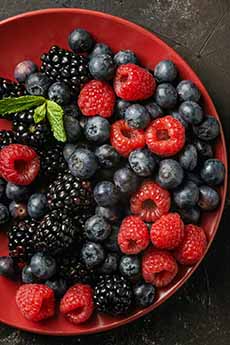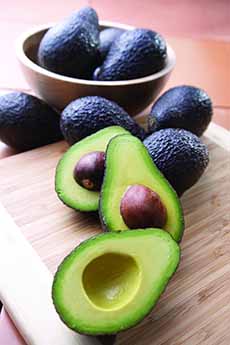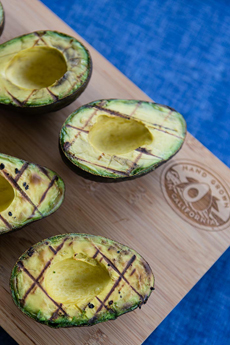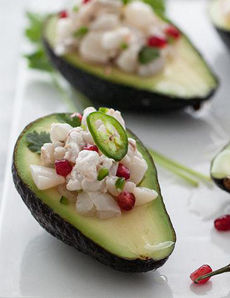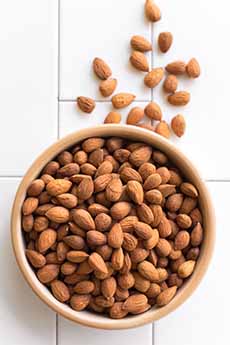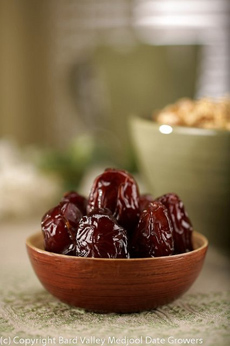|
July 29th is National Chicken Wing Day, celebrating a dish that rose to prominence in 1964 when a bar owner in Buffalo turned the inexpensive cut of chicken into an impromptu bar snack: fried wings, blue cheese dressing for dipping and celery stalks on the side.
The popularity of that bar snack turned Buffalo Wings into an appetizer at bars and restaurants across the country, not to mention a must-serve item for the Super Bowl and other sports games.
Here’s the history of Buffalo Wings. And here’s why you might not want to eat them very often.
In recent decades, chefs and home cooks have been putting their own spin on wings. The crispy skin is a canvas for international flavorings of any kind (here’s our recipe for Spicy Thai Chicken Wings).
How about Argentinian Chimichurri Wings, Filipino Adobo Wings, Greek Souvlaki Wings, Indian Spiced Extra-Crispy Wings, Indonesian Coconut Curry Wings, Moroccan Harissa Wings, or West African Spicy Peanut Wings?
You can find these recipes here. (And why not plan a wings party, while you’re at it?)
But with the rapidly growing interest in plant-based chicken nuggets and other formats, we’re stepping away from meat for this year’s chicken wings recipe. Instead, how about a plant-based alternative: Cauliflower “Chicken Wings.”
They’re baked-not-fried (although you can fry them), and served with the same blue cheese dressing and celery sticks as the original Buffalo Wings.
Some might call them cauliflower “bites,” but where’s the creativity in that? Carpe diem.
RECIPE: CAULIFLOWER BUFFALO WINGS
Thanks to Frigo Cheese, who created this recipe (photo #1) using their crumbled blue cheese (photo #6).
Prep time is 20 minutes, cook time is 20-25 minutes.
Ingredients For 6-8 Servings
For The Buffalo Cauliflower
¼ cup whole milk
¼ cup beer
½ cup all-purpose flour
½ teaspoon baking powder
¼ teaspoon onion powder
¼ teaspoon salt
1 medium head of cauliflower, trimmed and cut into florets
Cooking spray
2 tablespoons unsalted butter
½ cup purchased Buffalo Wing Sauce or make this easy recipe
6-8 celery stalks, trimmed and cut into 6-inch pieces
Ingredients For The Blue Cheese Dressing
5 ounces crumbled blue cheese
¾ cup sour cream
¼ cup whole milk
2 teaspoons garlic powder
1½ teaspoons onion powder
Optional: 1 teaspoon lemon juice and 1 teaspoon lemon zest
Optional: 2 teaspoons fresh dill, minced, optional
Preparation
1. PREHEAT the oven to 450°F. Line a baking sheet with parchment or foil and set aside.
2. COMBINE the milk, beer, flour, baking powder, onion powder and salt in a medium bowl. Mix until everything is just combined, being sure to not over-mix.
3. DIP each cauliflower floret into the batter, allow any excess to run off, and transfer to the baking sheet. Repeat the dipping process until you’ve battered all of the florets.
4. SPRAY the tops of the florets with cooking spray; this will help with the crisping. Transfer the baking sheet to the oven and bake for 20 to 25 minutes, until the tops are lightly golden brown. Meanwhile…
5. MELT the butter in a medium saucepan on low heat, and whisk in the Buffalo Wing Sauce or the Garlic Honey Wing Sauce until butter is thoroughly incorporated.
6. MAKE the blue cheese dressing. In a food processor or high powered blender fitted with a blade*, pulse together until smooth the crumbled blue cheese, sour cream, blue cheese, milk, garlic powder, onion powder and salt, plus the optional lemon and dill. Cover and refrigerate until ready to serve.
________________
*Alternatively, mix in a medium bowl with a rubber spatula until smooth.
|
|
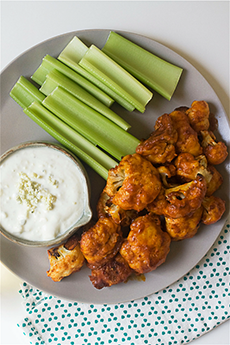
[1] Instead of classic Buffalo Wings, go vegetarian with cauliflower wings (photo © Frigo Cheese).

[2] Here’s a second recipe for Buffalo Chicken Wings from Broma Bakery (photo © Broma Bakery).
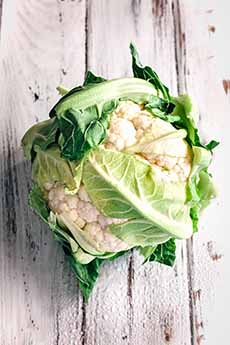
[3] A beautiful head of cauliflower. The name derives from the Italian cavolfiore, “cabbage flower,” after the Latin caulis, cabbage and flōs, flower (photo © Good Eggs).
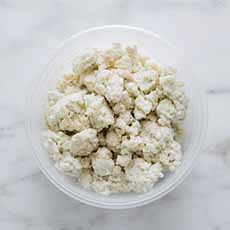
[4] Crumbled blue cheese (photo © Good Eggs).

[5] Crumbled blue cheese (photo © Frigo Cheese).
|

